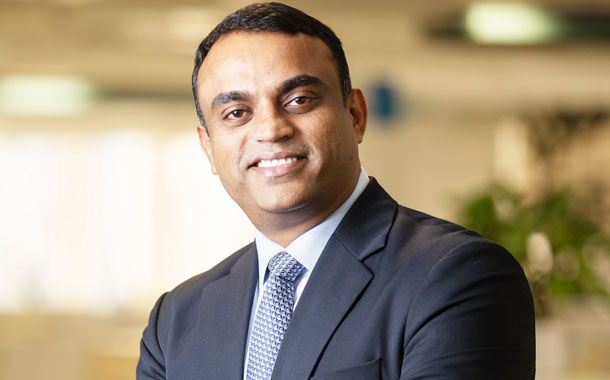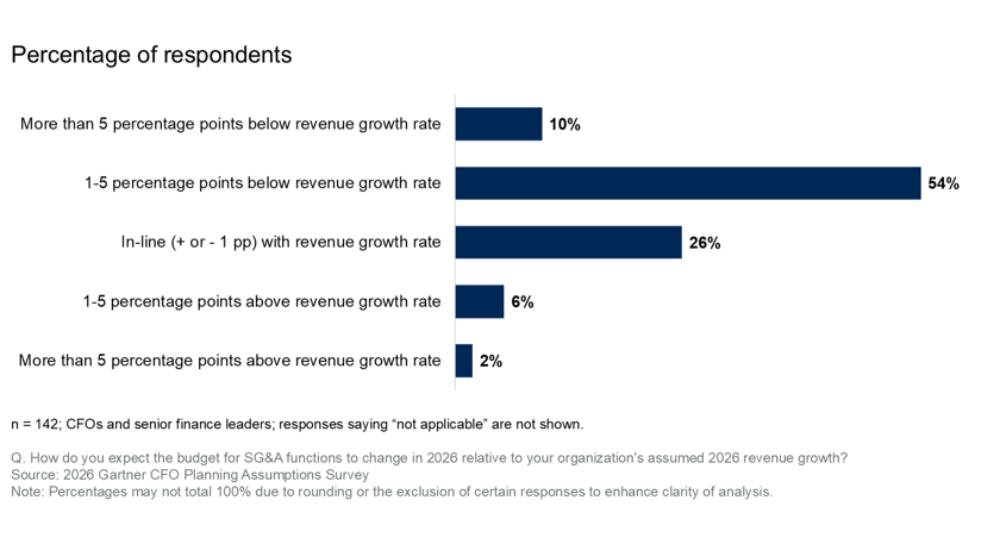By Arun Shankar
As workforces return to office in the post pandemic phase, rules of engagement between enterprises, vendors, global system integrators are positively changing.
The onslaught of the pandemic has spared no one. Even organisations that had a business continuity plan in place have been impacted, and the past few months have shown that merely having such a fall back plan is not sufficient to withstand such events like the global pandemic. Yet some organisations have been able to adapt faster than others, maintaining their financial position.
“Only the skillful disruptors or adopters, especially in the digital economy, are emerging stronger,” says Jacob Chacko, Regional Business Head, Middle East, Saudi and South Africa at HPE Aruba. “From a learning point of view, one thing which comes to my mind is irrespective of your size of the organisation, you need to be agile. You need to be prepared for the worst and you need to take your learnings across.”

Insights
- What we are going to see is an amalgamation of how we used to work and how we are going to work.
- The lockdown months have given regional enterprises sufficient time to think ahead and plan for changes.
- While discussions with vendors may not name technologies required, the business outcomes that need to be delivered are usually clear.
- Customers know exactly what is the outcome they want and journey for that outcome.
- Vendors and channel partners are likely to experience a sense of urgency amongst end customers.
- Digital transformation is happening and it is happening at a very fast pace.
- Processes are changing because business wants to cut costs and become leaner and meaner.
Aruba as an organisation has always been a strong disruptor, and has brought new technologies into the global market place. Chacko points out that Aruba, as a technology solution provider, has learnt from previous disruptions on the global landscape. But alongside, Aruba has been an advocate of providing the choice of technology to the customer. “We learnt that our customers need to be given a choice.”
The pandemic has tested organisations in terms of their preparedness for uncertainties and unpredictability, which came across without any warning. Having accepted the disruptive nature of the pandemic, organisations have also worked relentlessly to protect their most important assets, that is employees.
“Work from home, the ability to transform, and speed of transformation, have been some of the key success factors for organisations,” says Purushotam Savlani, General Manager and Business Head, Middle East, Cloud Infrastructure Services at Wipro Limited.
For global system integration partner Wipro, Aruba’s digital transformation solution built on cloud automation and backed up by Aruba’s security framework, are being used to build agility and robustness of enterprises in the post pandemic workplace. Aruba’s cloud based remote access and virtual private network solution, help to rebuild an office like experience, from remote locations like a worker’s home.
Wipro’s Savlani adds that, along with the right solution to help them transform, regional enterprises have also found that it is important for them to have an IT partner who can help them navigate the digital journey. “For global system integration partners like us, it is important that we empathise with the customer’s business need and become a trusted partner and an agent of change for them.”

Insights
- Work from home, ability to transform, speed of transformation, have been some of the key success factors.
- The onslaught of the pandemic has made IT decision makers realise the need to be agile and flexible.
- Both end users and global system integrators have been talking about service level agreements, stitched to business. “
- With the pandemic we have seen client acceptability to offshoring has gone up.
- Consolidation of vendors in large regional enterprises is another area where Wipro is seeing a change.
- Due to the disrupted nature of the workplace the consumption of IT is going to soar.
- Cloud, definitely is an enabler in terms of crashing down the time to provision a virtual machine.
Into the post pandemic months ahead
In this post pandemic phase, the need to survive is creating a pressure cooker kind of effect, boosting digital transformation regionally. This is especially so in the healthcare and education market segments. “They are adopting this change much faster than I would have ever imagined. There are a lot of discussions that we are having in the Middle East with customers from healthcare and the education segment, where I did not see that push before,” says Aruba’s Chacko. “They are preparing themselves for the post pandemic era, which I would call as the new normal.”
As a vendor aligned with regional enterprises in driving digital transformation adoption, Aruba has put a lot of focus on solutions for the education, healthcare and hospitality market segments. “What we are going to see in the post pandemic months ahead is an amalgamation of how we used to work before and how we are going to work in the new normal,” adds Chacko. “Digital transformation will pick up and customers are really looking for it. But yes, in the sectors where it now impacts the most.”
The pandemic has triggered a lot of interest in the latest digital technologies, according to Wipro’s Savlani. The onslaught of the pandemic has made IT decision makers realise the need to be agile and flexible, that can help them remain relevant in the market and build resiliency for the future.
“Since agility and flexibility are key characteristics of digital technologies, hence it makes sense to say that the pandemic has really accelerated the need for digital adoption and customers realise that,” adds Savlani. “It is also making end customers re-look at their investments and delivery models.”
Aruba’s Chacko feels that the lockdown months have given regional enterprises sufficient time to think ahead and plan for changes in the post pandemic workplace.
“Most of the people were working from home during this lockdown, and there were a lot of minds thinking on this aspect. We have been talking about a contactless everything, but I think going forward, it is going to become a hybrid world. Customers are thinking about it and gearing up for it – they know exactly what they need to do. Technology providers like Aruba and Wipro are coming together to provide solutions to customers,” he says.
Focus on business outcomes not technologies
In the post pandemic world, multiple technologies and multiple ecosystems may come into play. And while discussions with vendors may not specifically name the technologies required, the business outcomes that need to be delivered are usually clear, feels Aruba’s Chacko. “I expect my customer to know exactly what is the outcome that they want, and the journey for that outcome. I think it is a joint responsibility between the customer and a partner like Wipro and technology vendors like Aruba.”
Delivering a business outcome, in other words requires a diverse ecosystem of vendor with a global system integrator to stitch together technology components. Global system integrators are finally responsible for delivering the business outcome to the end customer.
“There are a lot of ecosystem partners, that need to be bought together to make a solution work. The strength of Aruba comes from the fact that we have an open platform. This is where Wipro comes in and builds the whole solution for the customer,” explains Chacko.
“Business outcomes and service level agreements are married together,” points out Karthikeyan Gunasekar, Category Lead, Wireless and SD-WAN, EMEA at HPE Aruba. A business outcome specified and desired by an end customer is transformed into a service level agreement. It is for this reason, “A service level agreement is always a business outcome,” continues Gunasekar.
“What really matters is a customer’s business outcome and how we are going to make that into a service level agreement. That is how we really approach customers. It is all tailor made,” he continues.
“Focusing on business outcomes is not something new, according to Wipro’s Savlani. Both end users and global system integrators like Wipro have been talking about service level agreements, stitched to business. ”
Customers do not see technology. What they see are the outcomes of technology that impacts their businesses,” he explains. “In the past also, service level agreements have been structured in such a manner, that uptime of services, in reality drives and enables business outcomes.”
Has pandemic brought new life into SLAs?
None of this is really changing in the post pandemic world, while organisations are preparing to go back to work. But as time goes by, end customers may become more sensitive to disruptions and how service level agreements from global system integrators can work to sustain business outcomes, through pandemic like events.
Prasanth Unnikrishnan, Pre-Sales Manager for Cloud and Infrastructure Services, Middle East, Wipro, also clarifies that service level agreements covering business outcomes have been around for some time, but with a relatively lower level of adoption and emphasis. In the post pandemic phase, this is starting to change. Since technology has always been the enabler for service level agreements, it has come into the spotlight overnight and is now attracting attention as well.
“Now that these times are tough for all of us, the emphasis on business level agreements like end user experience, has gained more momentum,” reflects Unnikrishnan. “Although the technological levers are the same, and will not change, it is for this reason, that the adoption rate for some of the technologies like cloud and analytics, will see a greater emphasis as we move forward,” adds Unnikrishnan.
In addition to specifying business deliverables in their expected outcomes, Wipro’s Savlani points out that end users are aligning better with global system integrators, who have much better experience to navigate the current crises. Traditionally regional enterprises with large operations used to rely on their in-house IT departments to pull them through their day to day operations. “Now, what we are seeing is, because of the disruption that has happened, they realise this is better done by service providers like Wipro,” says Savlani.

Insights
- Service level agreements covering business outcomes have been around for some time, but with a relatively lower level of adoption and emphasis.
- Now that these times are tough for all of us, the emphasis on business level agreements like end user experience, has gained more momentum.
- The technological levers are the same, and will not change.
- The adoption rate for some of the technologies like cloud and analytics, will see a greater emphasis as we move forward.
- There have been instances where we have challenged the existing process in place to make it more streamlined.
Role of global system integrators
Global system integrators have the right processes, right tools and right experience to enable enterprises, and to ensure that their day to day work is not affected. “I would say it is a matter of the three of us, the technology partner, service provider, and the end customer talking about the business challenges and then coming up with the solution,” adds Wipro’s Savlani.
Another change that is happening in the region, to align with the new normal of business transformation in the post-pandemic world, is end user acceptability in moving to new and innovative ways of consuming IT. While the technology ecosystem including vendors and global system integration partners, are under pressure to deliver, end users in the region are increasingly becoming more flexible in adopting agile ways of consuming technology.
Outsourcing and offshoring, an acceptable way of mitigating IT costs in the West, were usually met with lukewarm interest in this region prior to the pandemic. In the West, according to Savlani, offshoring is to the tune of around 85%, while in the Middle East it used to be around 35%. “But with the pandemic we have seen client acceptability to offshoring has gone up.”
Consolidation of vendors in large regional enterprises is another area where Wipro’s Savlani is seeing a change. This is also driving the regional move towards outsourcing and offshoring. Regional enterprises have realised the inevitable need to transform and bring on board the right IT partner, to help them in their journey of transformation.
In order to meet end user expectations, as they upscale operations and adjust to the new normal, a new approach is necessary. “We are approaching the same set of customers obviously, since our customers have not changed. But we are changing the dialogue we are having with customers and with channel partners,” says Aruba’s Chacko.
New approach by vendors and global system integrators
Moving forward into the new normal, both vendors and channel partners are likely to experience a sense of urgency amongst their end customers. This sense of urgency is driven by business and use cases with a high level of expectation, according to Aruba’s Chacko. “One of our healthcare customers wanted to convert a ship into a hospital, overnight. And we had to get the whole thing up and running in two or three days,” he points out. On the other hand, upgrading a customer’s system infrastructure may not carry that same level of urgency.
Inside the new normal, Aruba’s Gunasekar does not expect the vendor’s technology solution portfolio to change. He points out that Aruba’s portfolio is adaptive, is scalable and follows open standards, and can be tailor made to fit into any solution that a channel partner wants.
“Technology is not going to change. It is how we adapt and how we make that a valuable part of a customer’s day to day organisation,” continues Gunasekar. Aruba has also made its technology into a zero-touch provisioning solution for end users. Since the end user is not an IT expert, the solution is more like a plug and play tool. Zero touch provisioning also helps to reduce the downtime and makes the service level agreement more robust.
A key technology that is helping to meet end user expectations of urgency in the post pandemic phase is cloud. If a ship needs to be converted into a hospital, in the absence of hardware, this can be done by activating virtual machines and virtual private networks in the cloud. Cloud makes the solution robust, offers a central point of control, gives visibility, and is fast.
“Cloud is a major thing and that is where the market is. We are pushing our whole solution towards that cloud era and cloud native solution,” emphasises Aruba’s Gunasekar,
“We are already finding customers are going to crash down the time to deliver. Going forward, the expectations are only going to go up and that definitely puts pressure on us. We need to ensure that we have our resources aligned to meet this kind of expectation,” adds Wipro’s Savlani.
“Cloud, definitely is an enabler in terms of crashing down the time to provision a virtual machine, rather than having infrastructure enabled at their end. There is a huge amount of difference and time to market gets factored in,” continues Savlani.
Crashing down the delivery time was not possible, till just a few years back, when in the traditional way, hardware had to be procured with a lead time and then those systems had to be deployed. This challenge has now been eased with the adoption of cloud, bringing with it, agility.
Acceptance by regional end users of the usage of offshore delivery centers, captive development centers, and factory-based delivery models, in return for the quickest delivery span, is also helping global system integrators meet end user expectations, reducing the buildup of pressure at both ends. Wipro’s Unnikrishnan also points out, “There have been instances where we have challenged the existing process in place to make it more streamlined in order to deliver this service as quickly as possible.”

Insights
- Business outcomes and service level agreements are married together.
- A service level agreement is always a business outcome
- Technology is not going to change.
- It is how we make technology a valuable part of an organisation.
- Cloud is a major thing and that is where the market is.
- We are pushing our whole solution towards the cloud era and cloud native solutions.
- Aruba’s technology vision in the post pandemic workplace can be described as connect, protect and monitor.
Future opportunities and challenges post pandemic
In the near future, markets are going to have their share of opportunities and challenges. A number of factors are at play here, according to Aruba’s Chacko. “Digital transformation is happening and it is happening at a very fast pace. Processes are changing because business wants to cut costs and become leaner and meaner. Government regulations are also making it conducive, for example in tele-medicine.”
Wipro’s Savlani, points to another set of driving factors in the overall equation. Due to the disrupted nature of the workplace forcing both offsite and onsite workers to continuously collaborate, the consumption of IT is going to soar. To meet those demand levels both the consumption model of IT services and the delivery model of IT services will continue to change.
In addition, due to continuous disruption in the market, vendor Aruba and global system integration partner Wipro, will go through higher levels of collaboration and alignment, with each other.
However, the final caveat, according to Chacko, and a principal driver, across the complete span of transformation, is changing consumer behavior at the end points. And this is the driving vision for Aruba and Wipro to take strategic positions across the regional market, to meet and deliver end user expectations.
Global SIs and end customers in the post pandemic workplace
Aruba’s Chacko recommends the following guidelines as global system integrators engage with end users in the post pandemic workplace.
- #1 How does the end user define the new normal, understand the new normal from the customer’s point of view
- #2 Select a specific vertical market segment, including healthcare and education, understand the challenges inside the domain
- #3 Build specific solutions best suited for that market segment, specifically for healthcare and education
- #4 Build up the use case most suited for that specific customer, the new normal is creating unique uses cases
- #5 Use cases built up to manage the new normal, can be shared and reused, amongst other end customers as well
- #6 Along with the end users, identify the business outcomes that need to be delivered, and drive them through solutions developed
Aruba’s technology vision in the post pandemic workplace
Aruba’s technology vision in the post pandemic workplace can be described as connect, protect and monitor. With work forces distributed at multiples places and customers increasingly making online purchases, connectivity has become the fundamental backbone of existence in the post pandemic world of existence. With all types of end points being deployed and accessed on the network at the same time, the scalability of both the network and security frameworks are being stretched to the limit.
Monitoring and management of the connected network has therefore also become critical. Aruba’s Gunasekar indicates that Aruba’s platform provides complete visibility of which end points are on the network; the bandwidth being consumed; what are the security protocols in play around the device; and the types of processes that are happening. “This is a complete insight, a 360-degree view, even while sitting in one corner of the world,” he remarks.
With enterprises re-looking at their back to work strategies, technologies like cloud, VDI, SD-WAN, automation, that were low in adoption have started picking up traction. For now, the benefits of public cloud out-weight the benefits of on-premises applications hosted in enterprise data centres. Pay as you grow, cyber security frameworks, robotic process automation, digital workplaces, and business continuity, have become overnight buzzwords, in this post pandemic phase.




